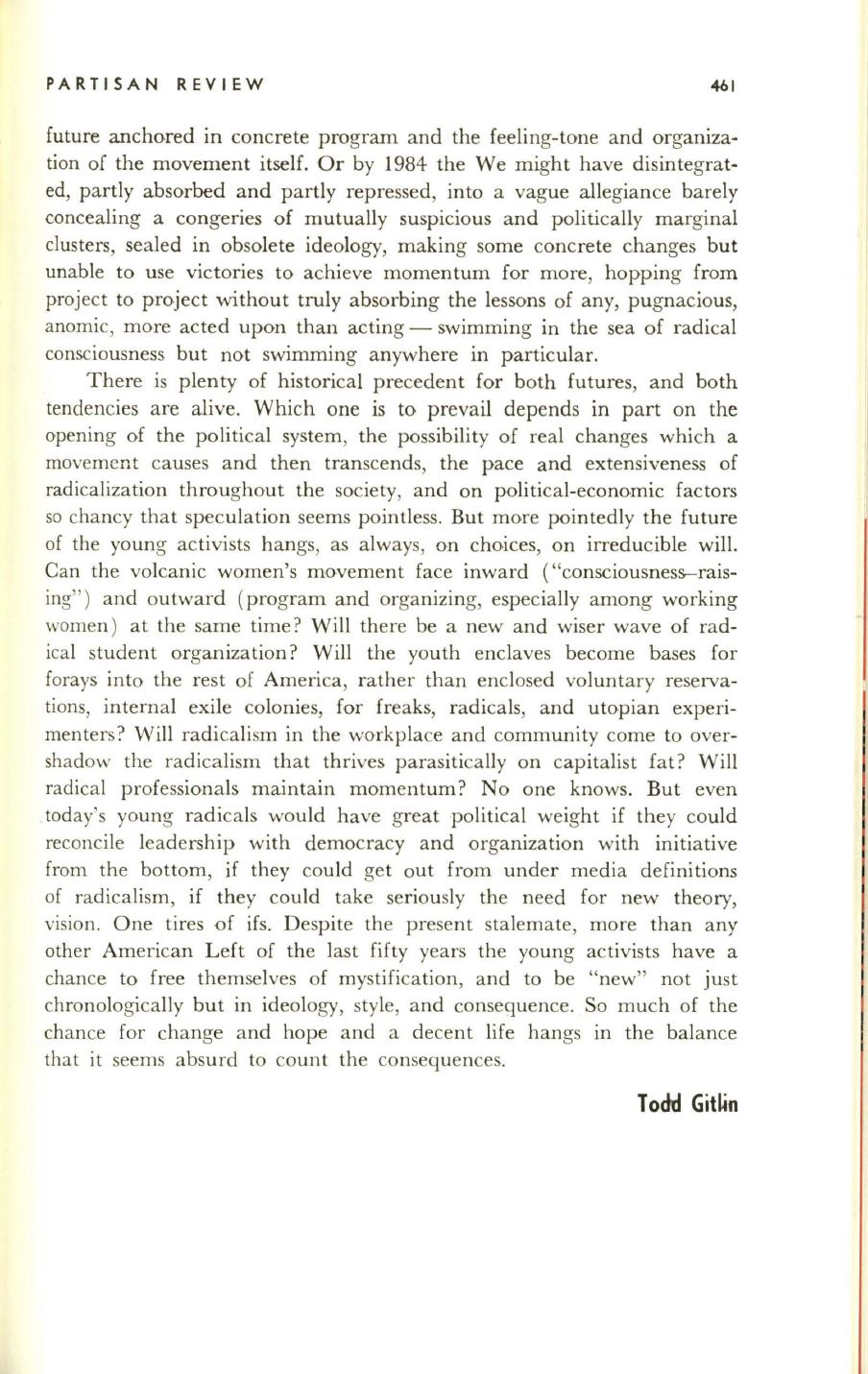
PARTISAN REVIEW
461
future anchored in concrete program and the feeling-tone and organiza–
tion of the movement itself. Or by 1984 the We might have disintegrat–
ed, partly absorbed and partly repressed, into a vague allegiance barely
concealing a congeries of mutually suspicious and politically marginal
clusters, sealed in obsolete ideology, making some concrete changes but
unable to use victories to achieve momentum for more, hopping from
project to project without truly absorbing the lessons of any, pugnacious,
anomic, mOTe acted upon than acting - swimming in the sea of radical
consciousness but not swimming anywhere in particular.
There is plenty of historical precedent for both futures, and both
tendencies are alive. Which one is to prevail depends in part on the
opening of the political system, the possibility of real changes which a
movement causes and then transcends, the pace and extensiveness of
radicalization throughout the society, and on political-economic factors
so chancy that speculation seems pointless. But more pointedly the future
of the young activists hangs, as always, on choices, on irreducible will.
Can the volcanic women's movement face inward ("consciousness-rais–
ing") and outward (program and organizing, especially among working
women) at the same time? Will there be a new and wiser wave of rad–
ical student organization? Will the youth enclaves become bases for
forays into the rest of America, rather than enclosed voluntary reserva–
tions, internal exile colonies, for freaks, radicals, and utopian experi–
menters? Will radicalism in the workplace and community come to over–
shadow the radicalism that thrives parasitically on capitalist fat? Will
radical professionals maintain momentum? No one knows . But even
today's young radicals would have great political weight if they could
reconcile leadership with democracy and organization with initiative
from the bottom, if they could get out from under media definitions
of radicalism, if they could take seriously the need for new theory,
vision. One tires of ifs. Despite the present stalemate, more than any
other American Left of the last fifty years the young activists have a
chance to free themselves of mystification, and to be "new" not just
chronologically but in ideology, style, and consequence. So much of the
chance for change and hope and a decent life hangs in the balance
that it seems absurd to count the consequences.
Todd
Git~n


